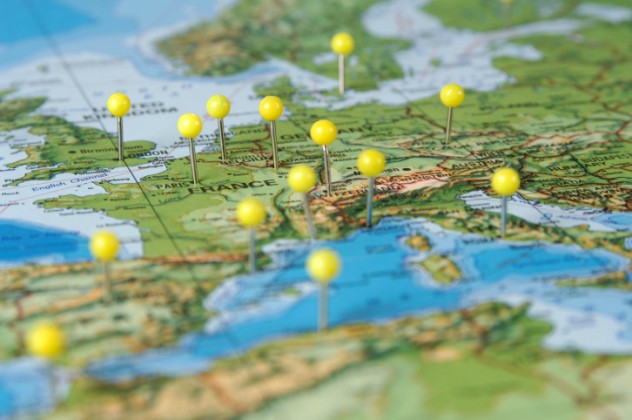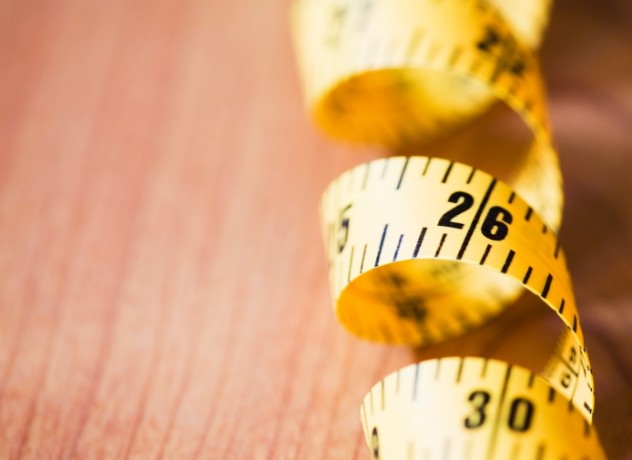 Technology
Technology  Technology
Technology  Movies and TV
Movies and TV 10 Ridiculous Riffs on Robin Hood
 Technology
Technology 10 Extreme Structures We Might See in the Future
 Miscellaneous
Miscellaneous 10 Catastrophic Translation Fails in History
 History
History 10 Wild Facts About the Mutiny on the HMS Wager
 Our World
Our World 10 Secrets Places You Won’t Believe
 Creepy
Creepy Ten Mythical German Beasts Guaranteed to Give You Nightmares
 Pop Culture
Pop Culture 10 Alternate Takes on Romeo and Juliet
 Travel
Travel 10 Christmas Towns Whose Name Has Nothing to Do with the Holiday
 Miscellaneous
Miscellaneous 10 Newer Christmas Traditions and Their Backstories
 Technology
Technology The 10 Most Compelling Aircraft That Didn’t Succeed
 Movies and TV
Movies and TV 10 Ridiculous Riffs on Robin Hood
 Technology
Technology 10 Extreme Structures We Might See in the Future
Who's Behind Listverse?

Jamie Frater
Head Editor
Jamie founded Listverse due to an insatiable desire to share fascinating, obscure, and bizarre facts. He has been a guest speaker on numerous national radio and television stations and is a five time published author.
More About Us Miscellaneous
Miscellaneous 10 Catastrophic Translation Fails in History
 History
History 10 Wild Facts About the Mutiny on the HMS Wager
 Our World
Our World 10 Secrets Places You Won’t Believe
 Creepy
Creepy Ten Mythical German Beasts Guaranteed to Give You Nightmares
 Pop Culture
Pop Culture 10 Alternate Takes on Romeo and Juliet
 Travel
Travel 10 Christmas Towns Whose Name Has Nothing to Do with the Holiday
 Miscellaneous
Miscellaneous 10 Newer Christmas Traditions and Their Backstories
10 Strange Units Of Measurement
Everyone is familiar with basic units of measurement: Inches, pounds, seconds, and other ways to break down our surroundings follow our every step from birth to death. However, there are many units of measurement that we’ve never even heard of. Some of them are amusing, some are extremely important and serious, and all of them are profoundly strange.
10 The Wales And The Belgium

The British have a long history of using strange yet descriptive units of measurement. Their media especially enjoys describing the size of things in terms like “bus length,” “football pitch,” and “Olympic swimming pool.” The weirdest of these descriptive units are probably the Wales and the Belgium. The Wales is, naturally, about the same size as the country, approximately 20,000 square kilometers (8,000 sq mi).
It hails from the days of the British Empire, and it is used to describe the size of various geographical areas in terms that are easily understandable to the average person. For instance, when Americans started the Vietnam War, the British news media introduced the country to the viewers as a “country in Southeast Asia that is 14 times the size of Wales.”
When Britain joined the European Union, the Wales was replaced by the Belgium; the country is 1.5 times the size of Wales and can act as a similar, easily understandable unit of measurement. Also, “Belgium” is apparently more international.
9 The Banana Equivalent Dose

There are many ways to measure radiation, and most of them are named after scientists like Geiger, Roentgen, or Sievert. And then there’s the banana equivalent dose.
Every banana you eat is contaminated with a tiny amount of radiation. Funnily enough, this amount is roughly 0.1 microsieverts (a sievert is the standard for measuring the biological effect of radiation). Although this is obviously a harmless dose, it offers an easily relatable comparison to abstract radiation figures. For instance, to receive the amount of radiation Japan’s Fukushima disaster leaked, you’d have to eat 76 million bananas.
The banana equivalent dose (BED) may actually be the first unit of measurement ever coined by a comic. It started out as a surprisingly well-researched comparison chart published in the popular webcomic XKCD. Since then, it’s been adopted by the likes of Forbes and BBC thanks to its ease and approachability.
8 The Crab

A crab might sound like a measurement unit for shellfish (or perhaps venereal disease), but has nothing to do with arthropods. Crabs and their cousins, millicrabs, are used to express the intensity of radiation sources in space.
The counterintuitive name actually comes from the Crab Nebula, a vast remainder of an ancient supernova that’s famous for being a particularly intense and steady source of space X-rays. Much like the prototype meter stick that was used to define metric measurements until 1960, the Crab Nebula serves as a standard for space radiation.
In recent years, scientists have noticed its radiation isn’t quite as steady as we previously thought, so the crab’s status as a reliable measurement unit is now under some debate.
7 The Beard Second

The fields of physics and engineering are famous for using a large number of different measurement systems, some more ridiculous than others. The beard second is among the stranger ones. It’s a joking (but quite popular) measure of small length, defined by the distance that the average beard hair grows in one second.
The beard second is among the many measurements inspired by (and parodying) the light year, the distance light can travel in one year. Its exact measure is hard to determine since there is no such thing as a “standardized beard.” Despite this, the beard second is generally thought to be roughly 5 nanometers (nm). This is based on the fact that a year has roughly 31.5 million seconds and the assumption that the “standard” beard grows about 15 centimeters (6 in) per year.
6 ASTA Pungency Units

Most people are familiar with the Scoville scale, which measures the hotness of chili peppers. However, this scale is kind of inaccurate, which is why real professionals scoff at the Scoville scale and rank their spices with ASTA pungency units. This scale measures the pungency of a pepper with a technique called liquid chromatography, which enables a more accurate score than the Scoville scale. But since the Scoville is fairly well-known and standardized, the ASTA scale is mainly used for measuring the color of pepper products. This is important, because the quality (and price) of a chili powder is usually tied to the deepness of its red color.
5 The Sydharb

People who have visited Australia might have encountered this mysterious unit that pops up in official documents and ordinary conversation alike. The strangely named sydharb is a rough measurement for a large volume of water. It’s named after Sydney Harbor and is used in roughly the same manner as the Wales and Belgium are used for land.
One sydharb is roughly the amount of water in Sydney’s harbor area—about 562,000 megaliters during high tide. Unsurprisingly, the unit has never gained popularity outside of Australia.
4 Furlong, Firkin, And Fortnight

Many strange measurement units have started as a joke or as one person’s strange idea that eventually gained traction. The Furlong, Firkin, and Fortnight System (FFF) is neither: It’s a rare case of a completely arbitrary measurement system that parodies other systems. It’s based around three basic measurements: the furlong for length (200 meters, or 220 yards), firkin for mass (40 kilograms, or 90 pounds) and fortnight for time (1.2 million seconds, or two weeks). The fortnight is based on an old English unit, while the others are deliberately ridiculous.
Although the system’s three basic units (and their many derivatives) are little more than a joking commentary on the many ridiculous systems of measurement that exist, they actually do see some use. “Furlongs per fortnight” and “firkins per fortnight” are known in-jokes that mean “any obscure unit.” The microfortnight (1.2096 seconds) is often used alongside the more legitimate time units in computing—as a sort of engineer joke. For instance, Google’s converter function supports the microfortnight.
3 Savart

As beautiful and occasionally chaotic as music may seem, it’s actually closely related to mathematics. When it comes to the savart scale, the two are practically one and the same. The system is based around the savart, a unit that is 1/301 of an octave (a musical interval separating two of the same note). If you know musical theory, a savart is a handy approximation unit in certain situations.
Despite its complicated obscurity, the savart was actually invented twice by two different people. The first was Joseph Sauveur, who invented it in 1696 and called it “eptameride” (a savart is 1/7 of a meride, a logarithmic interval measure he invented). In the 20th century, a French physicist named Félix Savart started advocating the concept, lending it his name.
2 The Erlang
 The erlang is one of the most common units of measurement that we bump into in our daily life, although we never realize it. Every second we talk on a phone, erlangs are ticking in the counter; the unit is used to measure telecommunications traffic. One erlang is equal to one hour of continuous traffic per voice path. Erlang measurements are vital in helping engineers understand telecommunications patterns and create networks that don’t crash under the sheer volume of calls.
The erlang is one of the most common units of measurement that we bump into in our daily life, although we never realize it. Every second we talk on a phone, erlangs are ticking in the counter; the unit is used to measure telecommunications traffic. One erlang is equal to one hour of continuous traffic per voice path. Erlang measurements are vital in helping engineers understand telecommunications patterns and create networks that don’t crash under the sheer volume of calls.
The unit is named “erlang” in honor of Agner Klarup Erlang, a notable eccentric and talented engineer who single-handedly created the entire field of telephone networks analysis.
1 Barn

If there was ever a unit that sounded like it must be farming related, the “barn” is certainly it. The very name of the unit conjures images of agriculture and herding bovines, but this couldn’t be farther from the truth. A barn is a particle physics unit that (along with its cousins, the femtobarn and inverse femtobarn), is used to measure how many particles hit a detector in collider experiments.
The barn was first used in June 1943, when it started appearing in reports at the Los Alamos secret laboratory. It was so named because the original name ideas, “Oppenheimer” and “Bethe,” were deemed too difficult to use efficiently. The scientists who came up with the unit were of rural origin, so “barn” just sort of popped in their heads, and the rest is history.
Pauli Poisuo also writes for Cracked.com. Why not follow him on Twitter?








